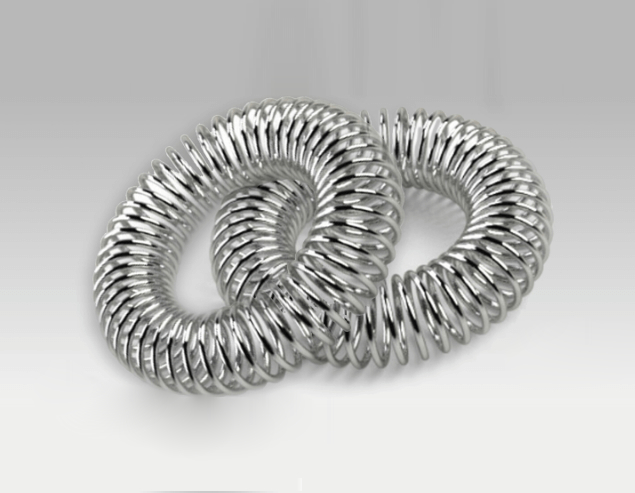Aerospace engineering has always been at the forefront of technological innovation, pushing boundaries to achieve unprecedented aviation and space exploration milestones. One area that plays a crucial role in ensuring the safety and efficiency of aerospace systems is dynamic sealing technology.
Dynamic seals are essential to prevent fluid leakage, maintain pressure differentials, and protect sensitive equipment from external contaminants. Traditional sealing solutions often fall short in the challenging environment of aerospace applications, where extreme temperatures and pressures prevail to catch up. However, recent advancements have led to the development of dynamic seals with enhanced high-temperature capabilities that are revolutionizing the aerospace industry.

This article delves into these cutting-edge advancements in aerospace dynamic seal technology. We explore how these seals overcome challenges posed by high temperatures, discuss their benefits for various applications within the industry, address frequently asked questions regarding their performance and reliability, and analyze their impact on future developments.
The Need for High-Temperature Capabilities
In aerospace applications such as jet engines or rocket propulsion systems, temperatures can reach staggering levels due to combustion processes or atmospheric re-entry conditions. Traditional sealing materials like elastomers or certain rubbers fail under extreme circumstances due to degradation or melting at elevated temperatures.
There is a dire need for dynamic seals capable of withstanding high temperatures without compromising functionality or integrity to ensure optimal performance and safety even under these harsh conditions. Fortunately, recent advancements have paved the way for innovative sealing solutions that address this critical requirement.
Advancements in Material Science
One key aspect driving advancements in aerospace dynamic seal technology is material science. Researchers have been exploring new materials with improved thermal stability and resistance to degradation at elevated temperatures. These advanced materials exhibit excellent mechanical properties, low friction coefficients, and high wear resistance, making them ideal for aerospace applications.
High-Temperature Resistant Polymers
Polyimides and perfluoro elastomers (FFKM) are high-temperature-resistant polymers that have gained significant attention in the aerospace industry. Polyimides possess exceptional thermal stability and can withstand temperatures up to 500°C (932°F), making them suitable for critical sealing applications in aircraft engines or space propulsion systems.
FFKM, on the other hand, combines the chemical resistance of perfluoroelastomers with high-temperature capabilities. With an impressive upper-temperature limit of around 320°C (608°F), FFKM seals provide reliable performance even in extreme environments where traditional elastomers would fail.
Ceramic Matrix Composites
Another promising material category for aerospace dynamic seals is ceramic matrix composites (CMCs). CMCs offer a unique combination of lightweight design and exceptional thermal properties. These materials consist of ceramic fibers embedded within a ceramic matrix, providing enhanced strength and thermal resistance compared to conventional ceramics.
CMCs can operate at temperatures exceeding 1600°C (2912°F) without significant degradation, making them ideal for sealing applications subjected to extreme heat. Using CMCs in dynamic seals ensures longevity and reliability under demanding conditions while reducing weight and improving overall system efficiency.
Innovative Seal Designs
In addition to advancements in material science, innovative seal designs have played a vital role in enhancing high-temperature capabilities for aerospace applications. Traditional radial lip seals or O-rings often must be improved to withstand extreme temperatures or pressures encountered during flight or space missions.
To overcome these limitations, engineers have developed novel seal designs tailored explicitly for high-temperature environments:
Spring-Energized Seals
Spring-energized seals are engineered with a metal spring core encased within a polymer jacket. This design ensures optimal sealing performance even at high temperatures and pressures. The spring provides the necessary force to maintain a tight seal, while the polymer jacket is a barrier against fluid leakage and external contaminants.
These seals are highly versatile and find applications in various aerospace systems, including fuel pumps, hydraulic systems, or cryogenic equipment. By incorporating advanced materials such as polyimides or FFKM, spring-energized seals offer exceptional resistance to thermal degradation and ensure reliable operation under extreme conditions.
Metal C-Ring Seals
Metal C-ring seals are widely used in aerospace applications due to their superior resilience and ability to withstand high temperatures. These seals feature a metallic ring with an asymmetrical cross-section that allows for efficient sealing when compressed between mating surfaces.
The metal C-ring design offers excellent recovery properties after compression and exhibits minimal leakage even under extreme temperature differentials. It finds extensive use in turbine engines, exhaust systems, or other critical areas where reliable sealing is paramount.
Benefits of Enhanced High-Temperature Capabilities
The advancements in aerospace dynamic seal technology have brought forth numerous benefits for the industry:
- Improved Safety: These advanced seals enhance safety standards within aerospace systems by ensuring reliable sealing at high temperatures.
- Extended Component Lifespan: Withstandability of extreme temperatures enables longer lifespans for critical components like engines, reducing maintenance costs.
- Enhanced Efficiency: Advanced dynamic seals minimize fluid leakage and improve system efficiency by maintaining optimal pressure levels.
- Weight Reduction: Using lightweight materials such as CMCs reduces overall component weight without compromising performance or safety.
- Versatile Applications: Aerospace dynamic seal technology finds applications across various sectors like commercial aviation, military aircraft, and spacecraft propulsion systems.
Aerospace dynamic seal technology advancements have revolutionized the industry’s approach toward sealing solutions that withstand extreme temperatures encountered during flight or space missions. Through innovative materials like polyimides, FFKM polymers, and ceramic matrix composites (CMCs), engineers have successfully overcome challenges associated with thermal degradation and improved seal performance under harsh conditions.
These enhanced high-temperature capabilities offer a range of benefits, including improved safety standards, extended component lifespans, enhanced system efficiency, weight reduction through lightweight designs like CMCs, and versatile applications across various sectors within the aerospace industry. As research continues toward achieving even more significant advancements in this field, we can anticipate further breakthroughs that will shape the future of aerospace engineering.

